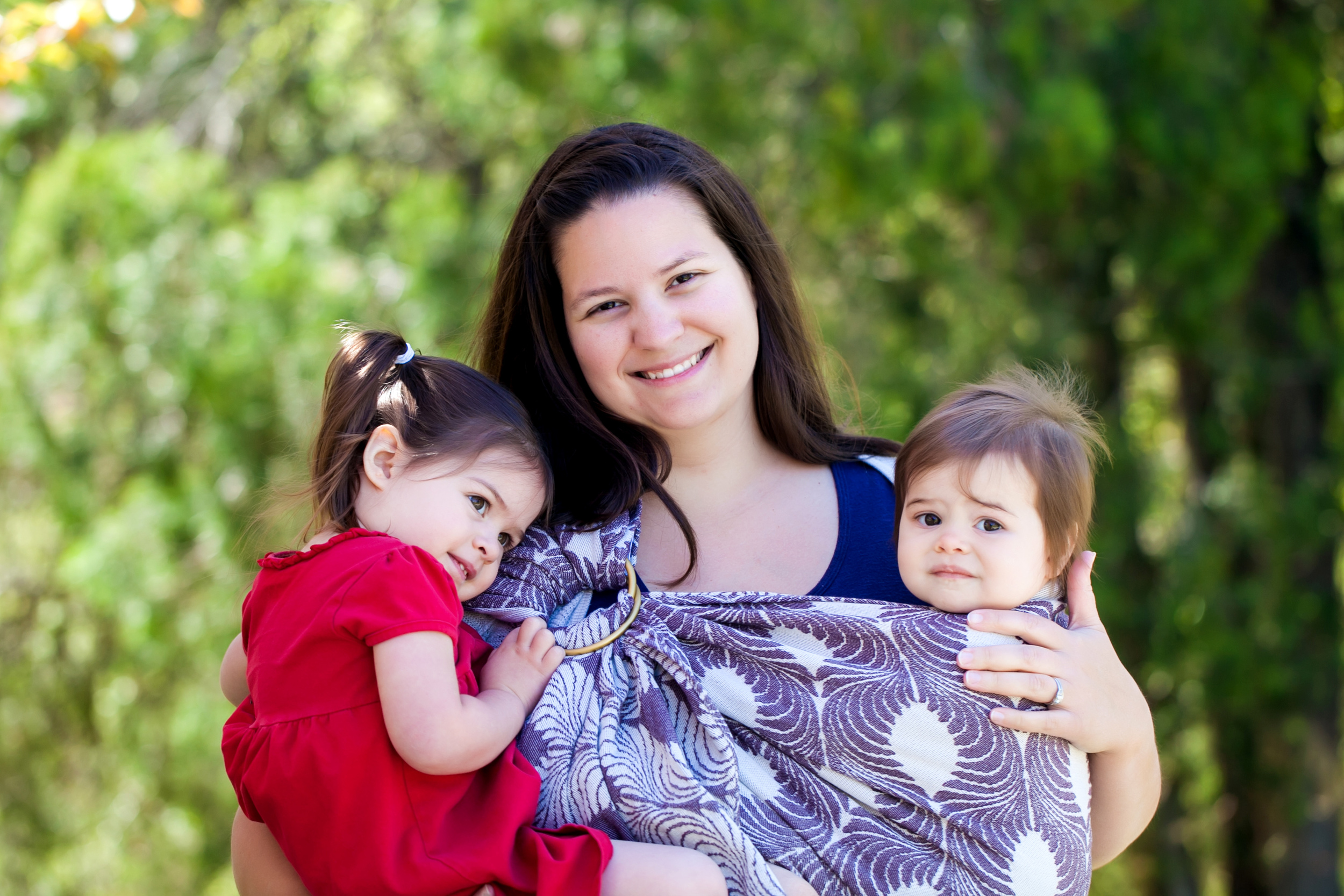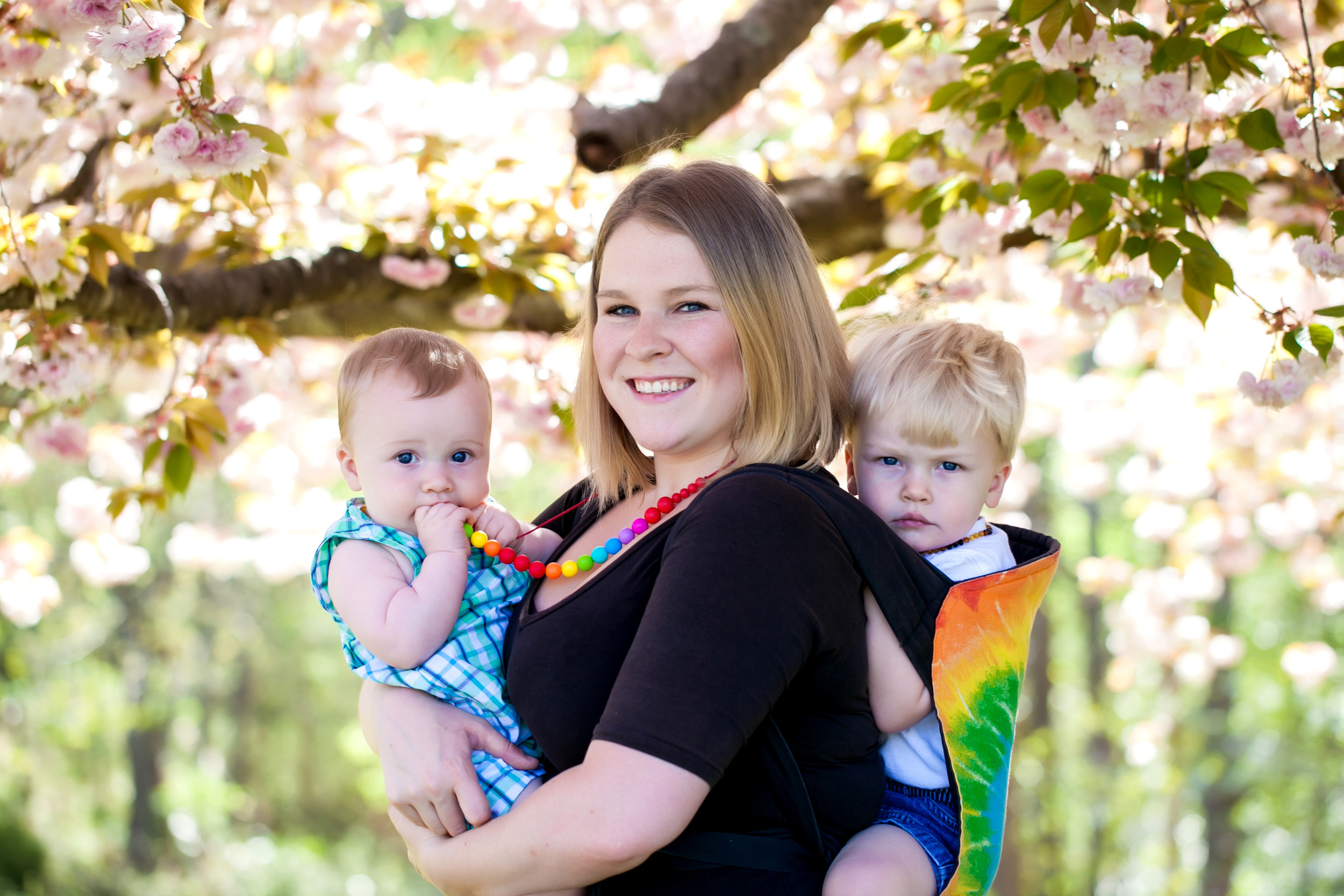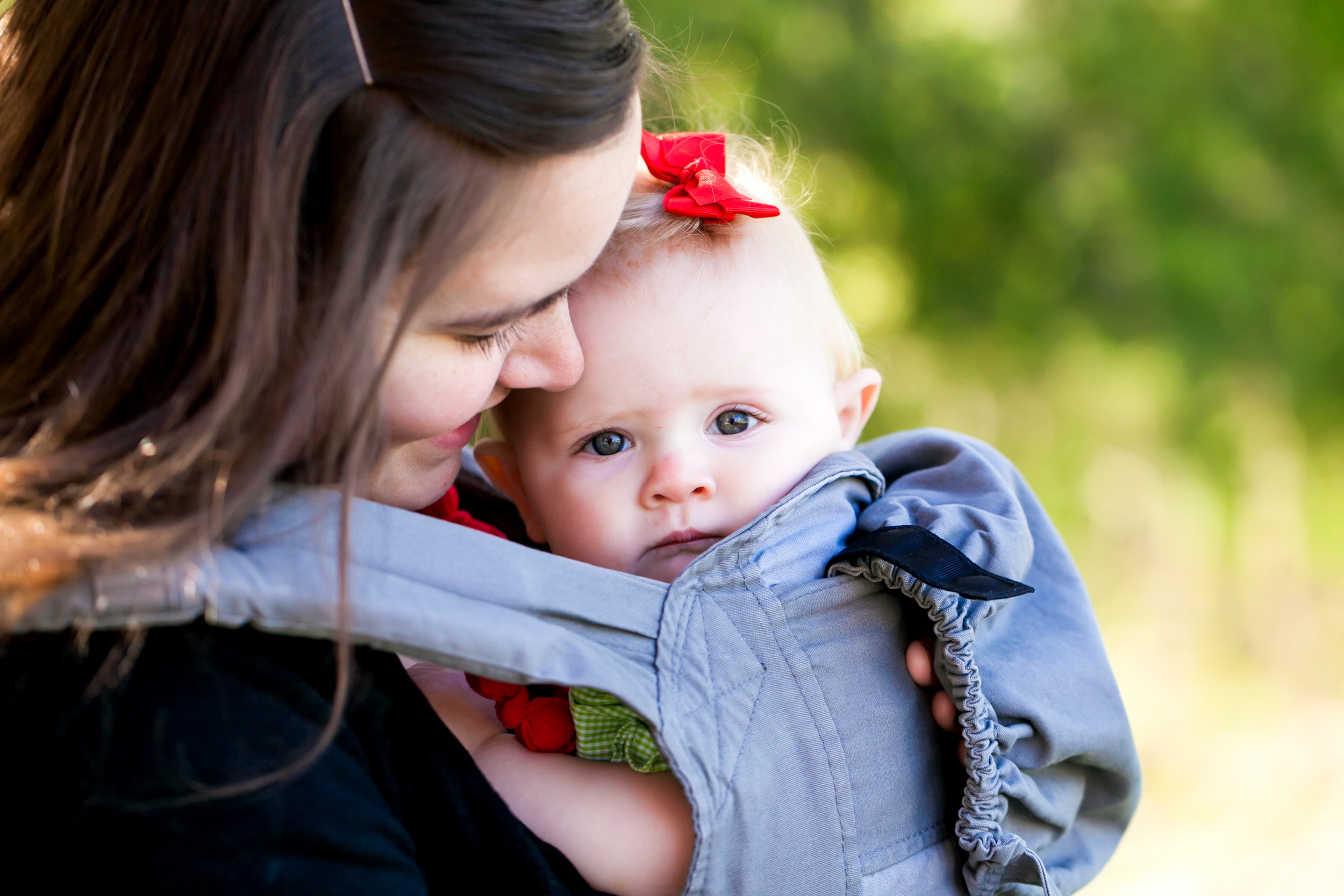 Our moderator and panelist: Erica Wolfe (wearing a Ring Sling above)
Our moderator and panelist: Erica Wolfe (wearing a Ring Sling above)
Erica welcomes and encourages mothers who love babywearing and want to learn more, those who have never heard of it, and those who know it is not for them. Strollers are great! ;)
One of the main benefits of babywearing is convenience. Being hands-free and keeping your baby close is very helpful. You can get things done while still nurturing and comforting your baby. If you need further convincing, the article Ten Reasons to Wear your Baby, by Laura Simeon, MA, MLIS, lists several more benefits!
The most important aspect of babywearing is safety. Always be aware of baby's position and that their airway is clear for breathing. Use the same safety measures you would when carrying your baby in your arms. When back-carrying, always stay aware of baby's movements and check them in a mirror periodically to ensure they are safe and comfortable. Erica reminds us: do not do something that you don't feel comfortable doing. If you're not ready to back-carry, then don't. Wait until you can get a spotter or a support person to ensure the safety of your baby. There are online groups and resources (both local and international) where you can get feedback and information on how to safely wear your child. For more excellent information on babywearing safety, see Earthy Crunchy Mama.
Another safety reminder is TICKS:
Types of Carriers
Wraps - the most basic and sometimes most complicated of baby carriers. A wrap is just a long piece of fabric, ranging from a long towel to a $1000 hand-dyed piece of fabric. There are both stretchy and woven wraps. Stretchy wraps are 100% cotton knit fabric. Stretchy carriers are most comfortable for young babies under 20 lbs. Stretchy wraps are ONLY to be used for front carries (back carries with a stretchy wrap are not safe). A woven wrap (seen above) is supportive and versatile, though does require a bit of skill to use. They come in a wide variety of lengths, and front, side and back carries are all possible. A size 5 or 6 is a common beginner size that will give you a wide availability of carries. Woven wraps are made of cotton, linen, hemp, wool, silk and various blends of each of these.
Woven Wrap Sizing
- Size 1: 2.2 meters (also referred to as a rebozo length or shorty)
- Size 2: 2.7 meters (also referred to as a rebozo length or shorty)
- Size 3: 3.2 meters (also referred to as a long shorty)
- Size 4: 3.7 meters
- Size 5: 4.2 meters
- Size 6: 4.7 meters (common beginner size, “standard”)
- Size 7: 5.2 meters

Mei Tais - ("may ties") is a popular Asian carrier (seen above). It is a basic design consisting of a square or rectangular piece of fabric with 4 straps. Like a Soft-Structured Carrier (see below), but without the buckles. Can be used for front, side and back carries, and used for newborn through toddler aged children.
Ring Slings - a single piece of fabric with a hemmed shoulder and two rings, worn on either shoulder. Many ring slings are made from woven wraps, and come in a variety of fabrics. Thin fabrics are not as supportive for toddlers, and the way you hold the child in a sling is not evenly distributed which can be difficult after extended periods. Ring slings are convenient for newborns and you can easily breastfeed a child in a ring sling.
Soft-Structured Carriers - sometimes called "backpack carriers", this carrier has padded straps and buckles. They can be worn in back or front. Less difficult to learn than a wrap, they are easy to get on and into position. While men can wear any carrier, most prefer a soft-structured carrier. When selecting this type of carrier, select a wide base to support your baby's bottom (this keeps their weight from being too heavy on their hips/legs). These carriers often include an insert for carrying newborns and small babies, though your child may be more comfortable in this type of carrier once they have better head control.
Toddler carriers - many brands make toddler-sized carriers, if you feel your child is outgrowing your wraps and slings.
Wrap Conversions - these styles have been created with woven wraps (as mentioned above in Ring Slings). They are very customizable, but can be expensive. If you have a woven wrap that you love but your child no longer wants to be wrapped, you can have it converted to another style (like a Mei Tai, etc.). There are a plethora of acronyms in babywearing, but those that start with WC indicate a Wrap Conversion.
Where to buy new carriers:
- Abby's Lane - Birdie's Room - Marsupial Mamas - Mom's Milk Boutique - Pax Baby - Specific brand pages
Where to buy used carriers:
- The Babywearing Swap on Facebook - Babywearing on a Budget (under $100) on Facebook - TheBabywearer.com (account required)
Local Babywearing Groups:
- Babywearers of Lynchburg - Roanoke Babywearers - Blue Ridge Babywearers
Online Resources:
- TheBabywearer.com - Create a free account and gain access to tons of babywearing resouces, forums, details on all carriers, geeky threads about brands, and B/S/T boards. - Babywearing 102 - Babywearing 102 on Pinterest - DIY Babywearing
For even more detail, view Erica's babywearing notes here.


